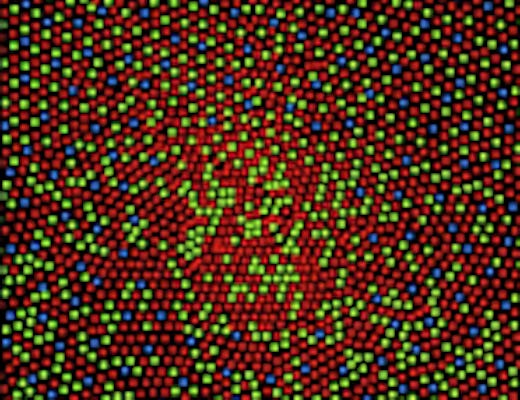What causes LED Flicker?
Mains electricity for residential and commercial properties operates on the principle of alternating current (AC); the process by which an electrical current and voltage is periodically reversed in an oscillating motion known as a sine wave. The sine wave constantly moves from negative to positive values in association with the magnetic polarity of the alternator generating the electricity. This fluctuating process enables high power propagation over long distances, but it also causes lights to rapidly switch on and off – or flicker. It depends on the type of light source whether this switching is noticeable or not. For example, incandescent lamps are too slow to actually respond to sine waves of the mains.

Flicker of LED lights is primarily determined by the power frequency of the mains supply, for example the UK’s mains frequency is 50 Hz, which describes an alternating cycle of 50 oscillations between negative and positive poles per second. The potential flicker frequency in a broad range of simple LED light bulbs is subsequently double the power frequency, 100 Hz and caused by rectifying AC power.
While these fluctuations are inherent in the methodology of AC power supplies, flicker can also be caused by driver or software-related issues.
Studies have shown that the human eye can perceive flicker of LEDs at rates of up to 90 Hz, and anything above that is imperceptible to the human eye. Generic lighting tends to operate at frequencies of 50 – 90 Hz, which is designed to illuminate an environment and give the impression of a stable and constant light source – even though the LEDs are consistently switching on and off hundreds of times per minute.
Further studies have shown that flicker rates of up to 500 Hz can result in unintentionally hazardous stroboscopic effects, while the perceived flicker of up to 70 Hz can result in:
- Seizures;
- Headaches, fatigue;
- Blurred vision, eyestrain;
- Reduced visual task performance.
However, visible flicker is not merely a result of frequency. It is determined by an index of factors including an LED’s peak intensity and the shape of its waveform (e.g. PWM), using various values to acquire a light source’s flicker percentage (0 – 100%), its flicker index (0 – 1.0) or IEEE PAR 1789. Measuring these varying parameters typically requires optical instrumentation enabled with CIE 1931 response sensors according to Vλ.
Flicker Measurements from Admesy
Admesy are leading designers and manufacturers of light measurement equipment for a broad range of applications, with dedicated instrumentation designed to measure lighting products at all stages of the production process.
The Asteria series is a high-speed light measurement device capable of sampling a light source at speeds of up to 186567 samples per second and is capable of measuring flicker as a percentage or index values as well as newly developed standards/recommendations that take into account multiple frequency components and their modulation.
The Prometheus Luminance and Flicker Meter now increases the sampling speed to incredible 800000 samples per second.
If you would like any more information about our flicker measurement products, please do not hesitate to contact us.

